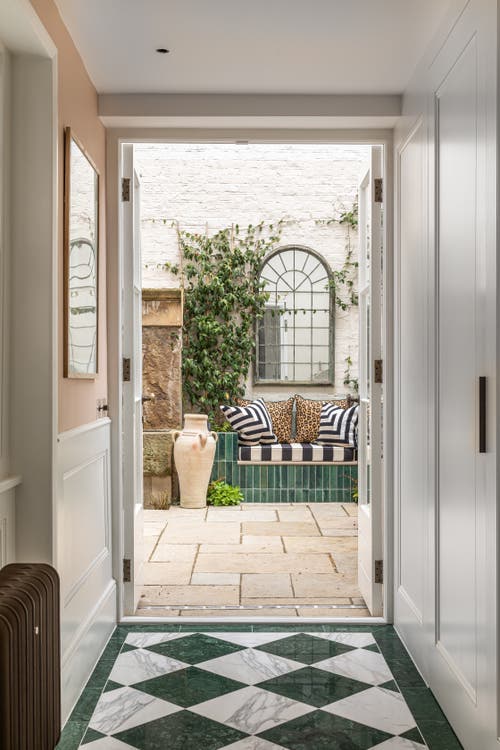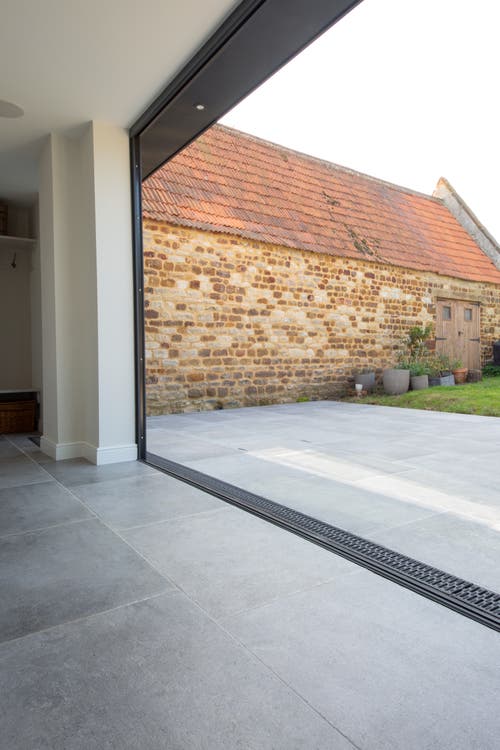Missing link
Sunday 25 July 2021
The Independent
Missing link
Sunday 25 July 2021
The Independent
Anya Cooklin-Lofting looks at how to create a flow between indoor and outdoor spaces for a seamless experience at home
Inside out: the trend can work no matter what size your garden is
(Apt)As a gardenless woman, last weekend I was lucky enough to spend lots of time in the company of friends in suburban gardens attached to houses and flats alike, enjoying the sun and the (still relatively novel) hospitality. Pimms on patios, rose on roof terraces, quick trips to the freezer for more ice and stolen moments in the cool of the kitchen: the delights of garden-centric summer living, played out over the threshold. It quite quickly struck me that it is a true luxury to be free to step between the inside and outside with such little consequence, such gentle fluidity. For me, an open window must suffice for fresh air, or else a walk to the nearest park. Experiencing a seamless, easy flow between interior and exterior is a pleasure unrivalled in this sustained heat, so this week, I spoke to some designers about how to harness it at home if you have the privilege of a garden, whatever its size.

Clever use of colour can connect inside and out
(Barlow & Barlow)An immediately effective way to create a flow from indoors to out is by creating a seamless continuity in style between the room that leads to your garden and the garden itself. This can be done with the floor, opting for similar stone flooring or tiles inside and out in a consistent size and format. In a recent project by Quorn Stone, a leading purveyor of natural stone and porcelain flooring, the company’s client specified identical stone-effect porcelain flooring for the kitchen and the garden patio. Combining this with bifold doors to create a liminal feel lent the comfort and sleekness of the indoors to the outdoors, and the serenity and openness of the outdoors to the indoors.
“Generally speaking, the kitchen acts as the gateway to the garden in most homes,” says Katy Paul, a designer at bespoke kitchen company, Tom Howley. Paul believes that the configuration of your kitchen can contribute to an indoor-outdoor feel, giving long summer evenings a luxurious feel, french windows thrown open to let a warm breeze circulate while your guests dine. “If your kitchen is near your garden and you want to achieve a flow between these spaces, make sure the furniture layout makes the best of this by orienting towards the view,” she says. “Creating an indoor-outdoor living space will mean that dinner parties can extend outside into the garden, with all the essentials to hand in the kitchen. This very visual connection between the inside and the outside is what makes for a successful ‘flow.’”
The best way to achieve this seamlessness is through creating an aesthetic that you can carry through both spaces
Lucy Barlow, the creative director of the interior design firm, Barlow & Barlow, also believes that there should be a discourse between your interior and exterior spaces. “Mirroring colours that you find outside and bringing them into the inside is a great way to achieve this,” she says. According to Barlow, tiles and paints in similar styles and colours used indoors and outdoors can contribute to this elusive, alluring “flow”. She adds that “using colourful soft furnishings outside from the colours you’ve used inside will create synergy and allow the two spaces to talk to each other.”
“The good news is, you can do this for a garden of any size,” says Stephane Piazza of Apt, the architectural firm that has recently worked with property developer Londonewcastle on its new London development, Chapter House. Piazza led the design scheme on one of the 40 residential apartments at the Baroque-fronted development, delivering a contemporary, urban garden space and an apartment, connecting the interior and exterior seamlessly. “We wanted to create a space for the client that broke down the boundaries of what it means to be inside or outside,” says Piazza. “The furniture is high-specification, outdoor-standard, but the look is not totally distinct from what you’d find on the other side of the glass doors to the living room,” he adds. The garden, and each of the outdoor terraces at Chapter House, was planted and curated by RHS Chelsea award-winning British garden designer Andy Sturgeon, and includes tall, metallic-finished planters that Piazza believes were intrinsic to the success of the space. “The positioning of the outdoor sofa against the backdrop of the planters helped to achieve a look that was noticeably similar to the interiors, through colour and texture. We created layers outside, in the same way you would indoors with wallpaper, furniture and accessories.”

Identical stone-effect porcelain flooring used to great effect in a kitchen and garden patio
(Quorn Stone)Garden furniture company, Moda Furnishings has also cottoned on to the idea of echoing the colours and textures of interior design trends to create a flow between its customers’ inside and outside spaces. “People want to see a flow from their interiors to their exteriors,” says CEO, Jonny Brierley. “The best way to achieve this seamlessness is through creating an aesthetic that you can carry through both spaces. As the demand for grey homewares like sofas and kitchen furniture continues to dominate, our customers want to echo this stylish look in their gardens.”